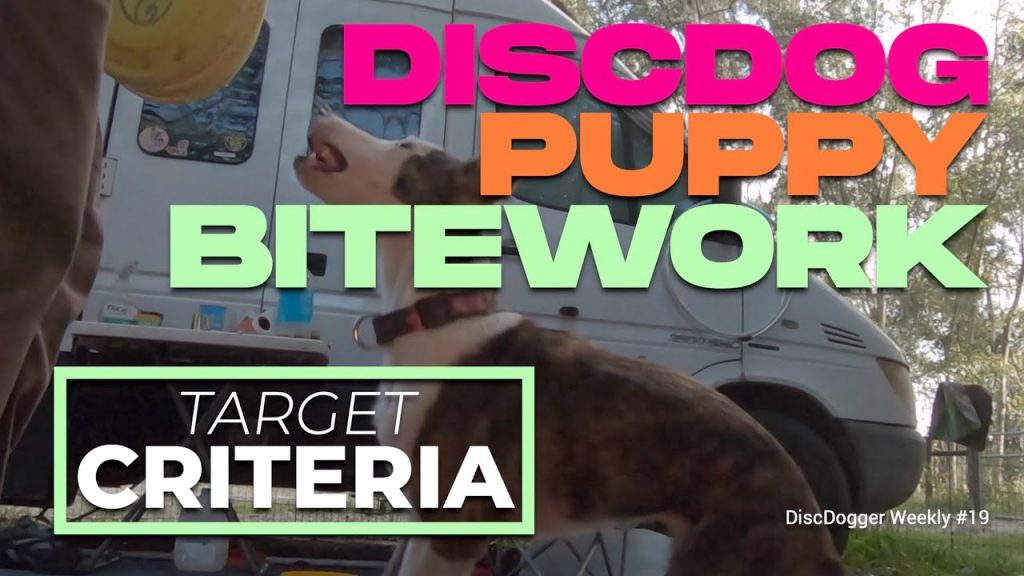
DiscDog Puppy Bitework | Criteria and Bite Trigger
Disc Dog Bitework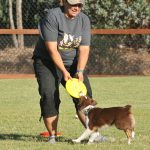 Bitework is an activity or a game that consists of biting and dropping a toy on cue. Cued Bites and cued Drops (and Gives) can be used to teach and reinforce many behaviors.... More is a great way to teach the mechanics of disc play: Bite, Drop, and Give
Bitework is an activity or a game that consists of biting and dropping a toy on cue. Cued Bites and cued Drops (and Gives) can be used to teach and reinforce many behaviors.... More is a great way to teach the mechanics of disc play: Bite, Drop, and Give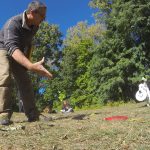 The Give is a retrieve to the hand. A cued Give is a foundational skill that is not super useful in the actual performance of disc dog freestyle, and has huge applications for... More. Each of these skills is integral to the game of disc with a dog whether you’re playing freestyle or focused on disc dog games. Ron & Grasshopper work a little bitework in this short session with a focus on drawing attention to the Bite and Drop criteria and the trigger for a Bite.
The Give is a retrieve to the hand. A cued Give is a foundational skill that is not super useful in the actual performance of disc dog freestyle, and has huge applications for... More. Each of these skills is integral to the game of disc with a dog whether you’re playing freestyle or focused on disc dog games. Ron & Grasshopper work a little bitework in this short session with a focus on drawing attention to the Bite and Drop criteria and the trigger for a Bite.
Shaping the Mechanics of Disc with Bitework
ShapingShaping is a learning technique where successive approximation and a Positive Marker are used to teach behaviors and communicate concepts. Successive approximation essentially means continually closer to the target behavior. So Shaping is... More is learning through successive approximation. It is a great way to obtain behaviors that are complex or difficult to obtain. Disc Dog Bitework rapidly shapes the three critical mechanics of disc dog: Bite, Drop, and Give.
These three behaviors can be difficult to obtain if you try to teach them all separately, and can be near impossible if you try to train a finished behavior from the onset. This is why we employ shaping, and in doing so we get all three behaviors in a single game: Bitework.
The game consists of Biting, Dropping, and Giving a toy in random and strategic fashion depending upon what the dog, handler, and team need to work on.
This session is focused on drawing attention to the Bite and Drop criteria and the trigger for the Bite for human teaching purposes. It is not a particularly good shaping session for the Grasshopper here…
Bite Criteria
The criteria for a cued Bite is not to put the teeth on, but instead should be to “remove the toy from the hand”. This criteria is easy to manufacture and leads to a sustained Bite.
If the criteria for the Bite is “teeth on” the dog can, and often does, learns to put their teeth on and take them off very quickly, leading to a quick bite and immediate release of the target. This quick bite and release is a slippery slope to no bite at all.
Setting the criteria of the Bite to “removal from the hand” leads to a strong and sustained bite that can easily be shaped into a bite and tug and possession of the target.
The removal from the hand criteria can be manufactured by giving the disc up rather easily. Weak biters are given the disc with a tiny bit of resistance and dogs who won’t bite will be able to “bump it” out of my hands with a simple nose touch. This scalability with discrete criteria leads to rapid and successful shaping of a strong, sustained Bite.
The importance of this criteria cannot be stressed enough. Marking the teeth on is a common mistake that leads to dogs who do not bite and “don’t like to tug”.
Drop Criteria
The criteria for a cued Drop is simply “teeth off”. It doesn’t matter why the dog is taking the teeth off, only that it happens.
A big problem people have with shaping the cued Drop is with adding additional criteria to “teeth off”. CriteriaCriteria is a key concept of dog training. Criteria is what exactly the handler is looking for out of the dog at any given time as a metric for success. Criteria is the... More like “NOW”, “because I cued you” and “leave it after you bite” get in the way of delivering the clear understanding of the important criteria “teeth off”.
In this session, I’m cuing Drop WAY too early. It’s cool, I’m not worried about it. The nice thing about the drop is that it will happen – 100% guaranteed, it will happen. I’m not concerned with when or why or what the dog does after. All I want is teeth off.
The early cue can build latency that is undesirable, but a good sharp marker followed by a cue and trigger to Bite tends to eliminate that problem rather quickly.
So it doesn’t matter that Grasshopper drops it only to chew it again, or that he accidentally takes his teeth off, or that his teeth “only came off because he was adjusting his chewing position” – if his teeth come off, I’m marking sharply and presenting that bite.
It is the presentation of the cued Bite as cookie that will pull him off that disc and reinforce the behavior of taking his teeth off and making the criteria I’m looking for memorable.
Bite Trigger
The trigger for the cued Bite is a sharp horizontal presentation of the disc. When the disc is not horizontal the dog should view it as uncatchable. In the middle of the video session I reinforce that idea that the vertical disc is “uncatchable” despite Grasshopper’s forward, pushy attempts to get the disc.
Repetitive crisp presentations of the Bite trigger help to reinforce both the idea that a non-horizontal, dead disc is uncatchable and also that the actual trigger to bite is that rapid presentation of the horizontal disc.
I’m also giving a simultaneous verbal cue, that “Tchk” sound, and it’s likely the only simultaneous verbal/physical cue that I give in my dog training.
Re-grab = Re-Bite and Backchain of Give
I’m using a re-grab in this session. Once he takes it from me, I re-grab it and let him win again. This increases the rate of reinforcement on the successful bite and also serves as a backchain of the Give behavior.
Chewing and Running = Time Wasted – Not MY Problem – The Answer is Teeth Off
This is critical. When Grasshopper is chewing and walking off with the toy, I’m just waiting for teeth off so I can pounce on successful meeting of that criteria with high energy play.
Every moment he spends walking around with the toy or chewing is time he could be spending biting, dropping, giving, and other amazing stuff. It, literally, is not my responsibility.
Resist the urge to cheer the dog on or badger about the drop. That activity can reinforce the holding/chewing/leaving with the disc. Instead, sit silently and be ready to pounce with your marker and cued Bite.




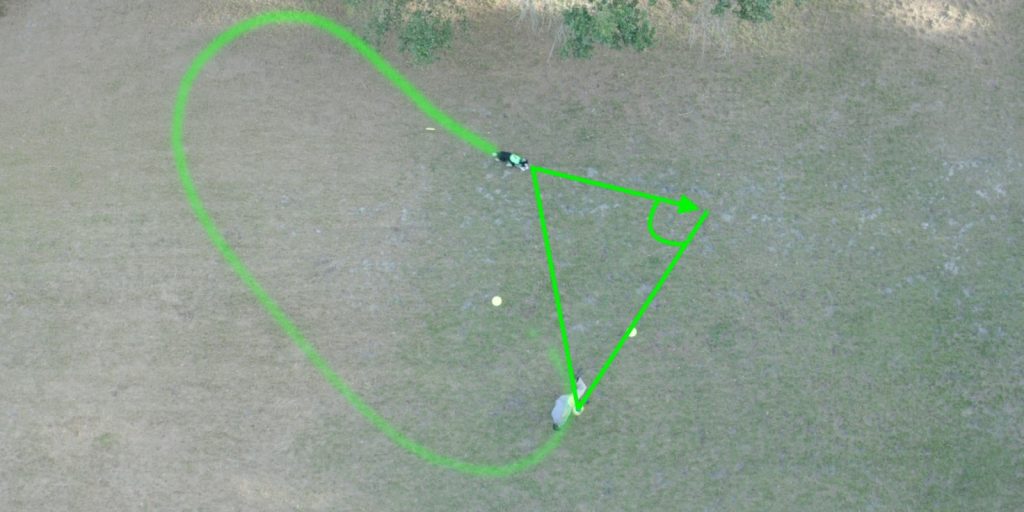
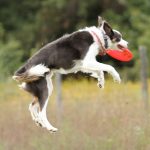
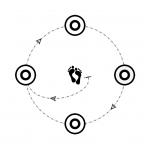

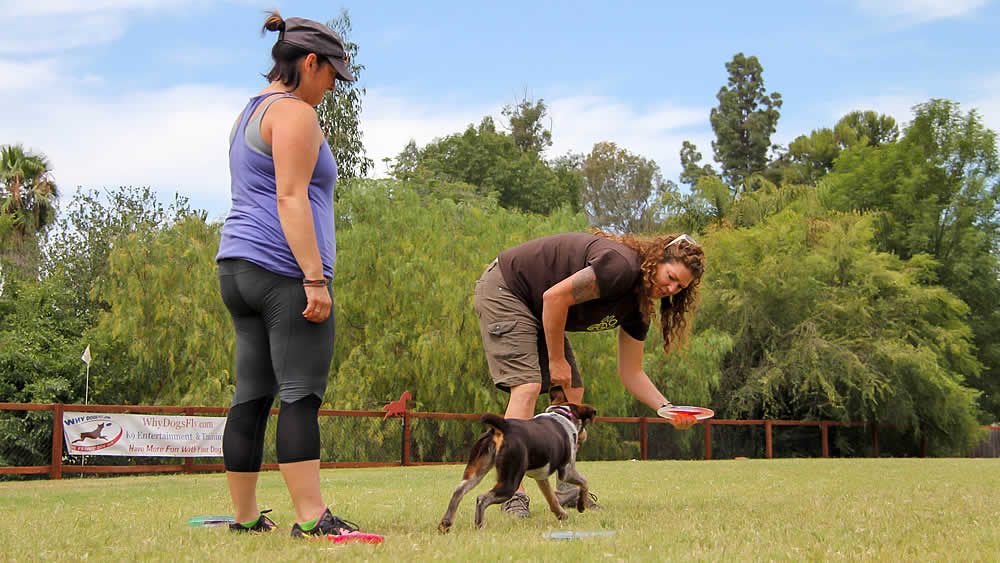
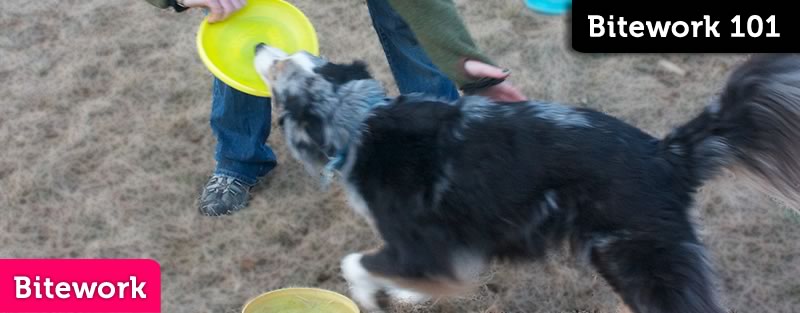
Responses